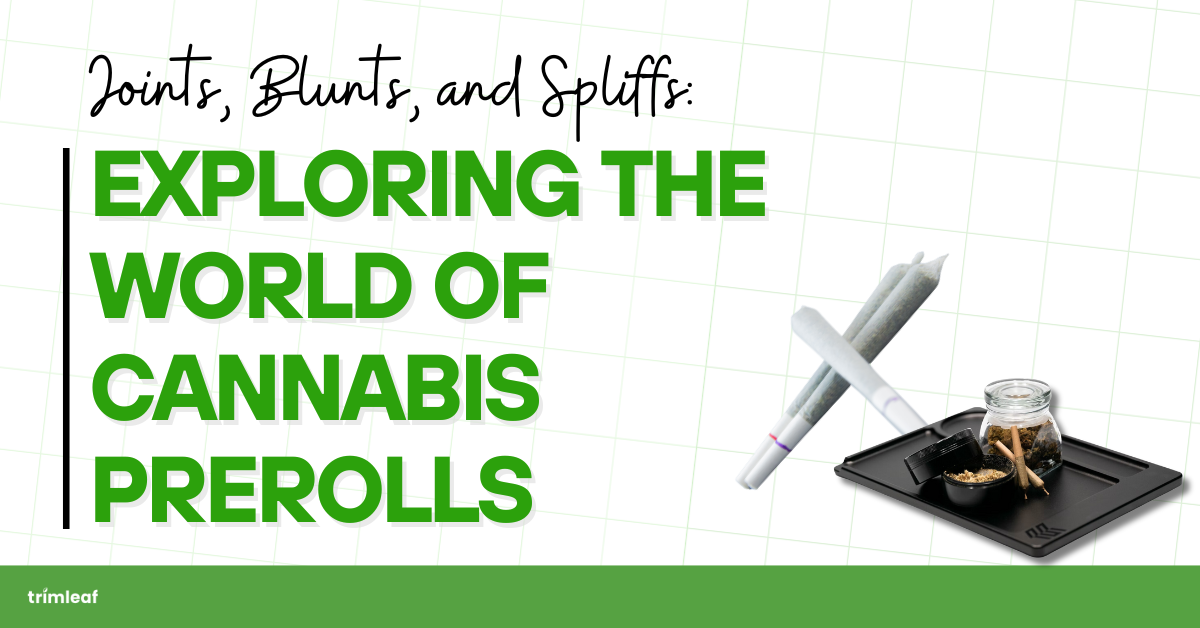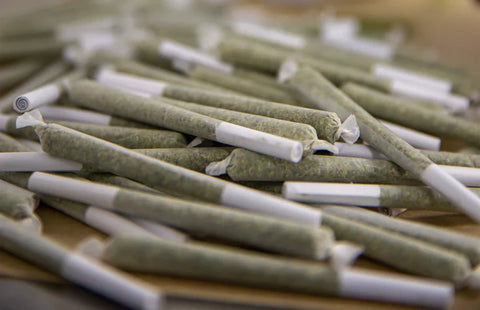
Cannabis use has become part of culture for many, and one of the most popular ways of using it is by smoking a roll made of weed.
 Image courtesy of The Cansumer
Image courtesy of The Cansumer
Rolling cannabis goes beyond being a mode of consumption. Many view it as a tradition and an art form. Being able to roll a joint allows for a more personalized experience: you get to choose the type of strain, rolling paper, and the way to roll it. Making your own rolled cannabis gives you familiarity with cannabis and the rolling techniques to get the best results. From a cultural perspective, rolled cannabis creates camaraderie, with users sharing joints as a way of bonding and socializing.
There are three types of rolled cannabis: joints, blunts, and spliffs. Each has its advantages and disadvantages, depending on your mileage. Whether you're a seasoned cannabis enthusiast or just curious about the world of rolled cannabis, it's essential to understand the crucial differences between these three forms of rolled cannabis.
Joints: A Pure Experience
Joints, or somtimes referred to as pre-rolls, are the easiest way to make rolled cannabis and are also the purest way to enjoy it. They are made purely of cannabis and are rolled using rolling paper. These rolling papers can be plain rolling paper, rice paper, hemp, and flax, among other variants. Some manufacturers also infuse flavors into these rolling papers for a different twist. If you're using the pre-rolled variant, you will find that these rolled papers, or cones, will come in different diameters.
On the economic side, joints are also cheaper, as each pack of rolling paper will have a good quantity, compared to blunts, which only have ten sheets.
Each joint will likely have a filter on the end, which holds the roll in place and protects from burning your lips. Joints are also compact and handy, which makes them great for anyone looking for a portable solution for consumption.
While joints are good, they do have disadvantages. First, joints tend to burn continuously, meaning every second it's lit means cannabis burning. While joints are pure cannabis, they may sometimes not be as potent, given that no additives like blunts or spliffs exist.
Blunts: Strong and Flavorful
Blunts are made with tobacco leaves or cigar wraps, adding flavor to the cannabis. Blunts are an excellent choice if you're looking for a strong flavor. Tobacco leaves tend to burn slower than rolling paper, which makes them ideal for passing around. And because tobacco leaves are broader than rolling paper, you can pack more cannabis in each roll for a more potent effect.
While blunts might be enticing, there are some things to note.
Blunts are rolled with tobacco leaves, which means you get a blend of tobacco and cannabis burning simultaneously. If you're avoiding nicotine or the side effects of smoking tobacco, then blunts aren't for you.
It also takes some practice to create the perfect blunt. Blunts are larger than joints; it takes skill to roll properly and keep things compact.
Spliffs: Where Joints and Blunts meet
Spliffs are where joints and blunts meet. They are made with rolling paper but filled with ground cannabis and tobacco leaves. You get that tobacco feel when smoking a spliff, as the latter has more tobacco content than a blunt. Like joints, spliffs also have a crutch or filter on the end.
The nice thing about spliffs is that you can adjust the ratio between tobacco and cannabis. You can lower cannabis content to reduce potency or increase it to reduce the tobacco flavors. The right mix will depend on your preference. They can also extend your cannabis supply, as tobacco serves as an "extender."
For its disadvantages, spliffs, like blunts, still have tobacco content. If you want to avoid nicotine, then stick to joints. Like blunts, spliffs take practice to roll by hand. But if you make things easier, you can make spliffs using the same pre-rolled cones and machines used for joints.
Conclusion
Regardless of your preference, remember that a good blunt, spliff, or joint needs properly ground plant material. You want to sift it of sharp particles that can puncture your rolls. Neither do you want them to fine, as this can cause the roll-up not to burn correctly.
Lastly, given preferences, you can't say one is better than the other. As we listed, joints, blunts, and spliffs have pros and cons; it's a matter of personal preference and mood. If you're in the mood for something pure and want to stay away from tobacco, then a joint is for you. If you prefer intense flavors, then a blunt or even spliff might be the practical choice, depending on how much tobacco flavor you want.




